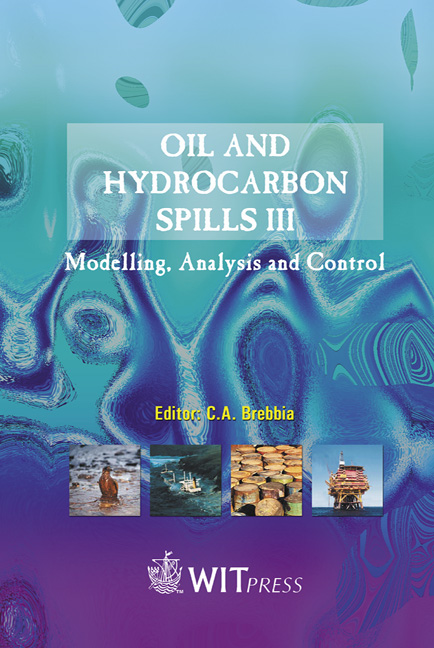Inland Spill Management In Urbanized Areas
Price
Free (open access)
Transaction
Volume
59
Pages
Published
2002
Size
399 kb
Paper DOI
10.2495/OIL020131
Copyright
WIT Press
Author(s)
J. Li
Abstract
Urban oil spills are frequent in many industrialized cities and towns. Although the volume of an inland oil spill is usually small compared to that of an ocean oil spill, the frequency of inland oil spills is far greater than that of ocean oil spills, Thus, the cumulative volume of inland oil spills can still cause significant environmental impacts on the receiving water bodies. This paper describes an inland spill management study in an industrial city in the Greater Toronto Area in Canada. The study began with a compilation of oil spill database. Characteristics of oil spill events were analyzed at different spill locations. It was found that human errors and equipment failures were the primary causes of oil spills. Geographic Information System was then used to identify spill prone sewersheds. By overlaying storm drainage systems with spill locations, stormwater ponds receiving these spills were identified for retrofit. For storm outfalls which discharge directly into watercourses, downstream publicly-owned land were identified for the potential installation of oil-water interceptors. This study demonstrates that good planning is important to manage oil spills in urbanized areas. 1 Introduction The Toronto and Region Remedial Action Plan area (herein Toronto AOC) contains six major watersheds draining into the waterfront and Toronto Bay, including Etobicoke and Mimico Creeks, the Humber, Don, and Rouge Rivers, and Highland Creek. With over three million people in an area of about 2000 square kilometres, the greatest challenge is the impact of urbanization and the associated activities. Extensive urbanization and continued growth pressures in the area have contributed to the use impairments of rivers and lakes. The Toronto AOC receives bacterial and nutrient inputs and heavy metal and organic
Keywords





